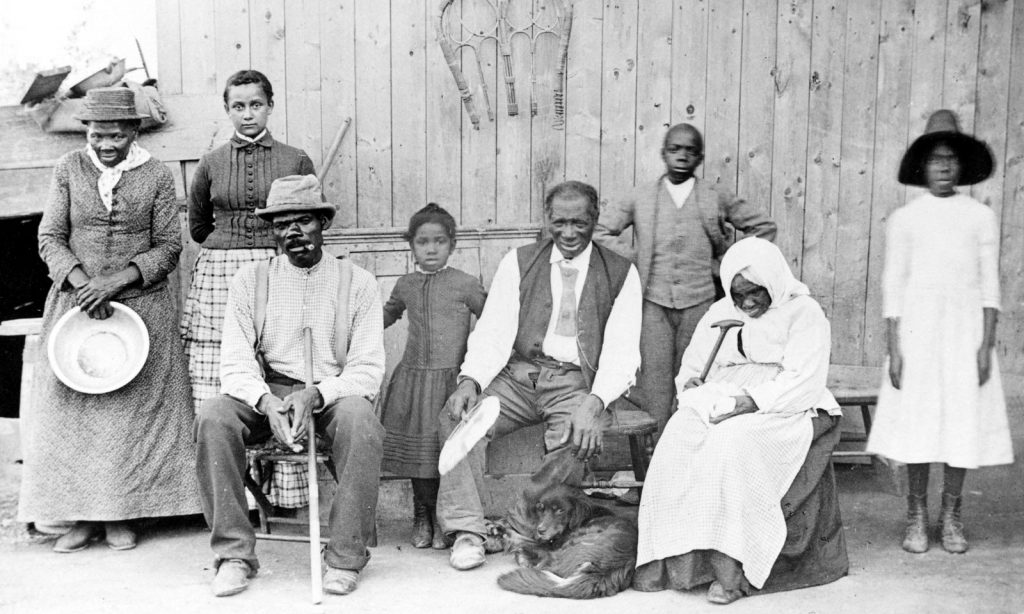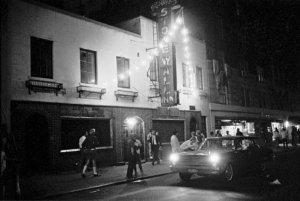It was night, and Harriet Tubman and her brothers began their journey to freedom. But when she looked back, she saw that her brothers were not following behind her. They were frozen in fear, thinking about the fact that they could get caught and face awful consequences. With their fear increasing, they said their goodbyes and headed back to their owners’ house.1 Saddened and alone, Harriet began walking north; nothing was going to stop her from getting what she always wanted, and that was her freedom.
One day, around the age twelve, Harriet Tubman’s owner threw a heavy weight at her after a fit of rage came over him. This fractured her skull, which applied pressure to her brain, and it made her have disabilities while growing up. This wasn’t the only pain Tubman had throughout her childhood. She also saw her sister being sold and taken away from them. Afterward, her parents were saddened and asked themselves why life was the way it was for them.2 Harriet Tubman didn’t know it then, but the struggles she faced when she was a child were only preparing her for the greater things she was going to achieve much later.
By the time Harriet Tubman had grown older and wedded, not many changes had been made in regards to the treatment of African-American slaves. In the 1840s, Tubman, along with her husband, John Tubman, a free man, worked with her brothers as cotton field slaves. During this period, it had become known to her that their master had made plans to sell her and her brothers, leading the family to be separated once again. If the idea of being separated from her family had not been fearful enough for Tubman, the unspoken horrors of being sent further South added to the horror of being torn away from what she already knew.3

Within her, the desire to be free became stronger and stronger. It had grown so much within her that she spoke to her husband John about it, to which he responded that he would tell her master if she ever attempted to run away. John being a free man held a certain power over his wife that she was not capable of fighting. Since her husband had made his opinion known to her what he would do if she were to try and escape, their last known moments together were filled with tension, and Harriet was on edge constantly.4 However, even with the threats coming from John, this did not fully keep Harriet from planning her escape; it had just delayed it. More than ever, she was determined to become free and leave her condition of dependence on not only her master, but also on her husband. She was very careful in discussing her plans to run away and when she would do it.5
On the night of her escape, she gathered her brothers and began singing a song to the other slaves, telling them that they were leaving. She led the way north, but when she turned around, she saw that her brothers were not following. They were afraid that they would get caught and face horrible consequences. They said their goodbyes to their sister and headed back to their master’s house. Even though Harriet was now alone, and much more vulnerable than before, she headed North towards her freedom.6 Tubman would travel during the night, because it made it harder for people to see her, and she would hide out during the day with people she could trust. After long days of traveling, she finally reached a Northern state, where she could be a free woman.
Yet even gaining her freedom, she could not stop thinking about her brothers and how they were still living as slaves. She decided to create a plan to go back and rescue her brothers. She knew that it would be extremely dangerous to return to the southern states because of the Fugitive Slave Act, which stated that it made it illegal for slaves to escape and illegal for anyone to help them. It also made it easier for slave owner to reclaim their slaves after they escaped.7

With the help of the Quakers, she was able to help her brothers and niece to escape.8 She did not want to stop there, so she returned to the South nineteen more times to help rescue more people. They called it the Underground Railroad, which is what Harriet Tubman is famously known for. The courage she showed, to be able to escape and then go back to help others also escape, has been greatly valued ever since. She helped others find the courage within them to fight for the abolition of slavery.
- Sarah Bradford, Harriet Tubman The Moses of Her People (New York: Corinth Books Inc., 1961), 29. ↵
- Sarah Bradford, Harriet Tubman The Moses of Her People (New York: Corinth Books Inc., 1961), 14-15. ↵
- James McGowan, Harriet Tubman: A Biography (Santa Barbara, Calif: Greenwood. 2011), 4-6. ↵
- Rosemary Sadlier, Harriet Tubman Freedom Seeker, Freedom Leader (Dundurn, 2012), 48-49. ↵
- Rosemary Sadlier, Harriet Tubman Freedom Seeker, Freedom Leader (Dundurn, 2012), 48. ↵
- Sarah Bradford, Harriet Tubman The Moses of Her People (New York: Corinth Books Inc., 1961), 29. ↵
- Encyclopedia of African American History, 2010, s.v. “Fugitive Slave Act of 1850,” by Alfred L. Brophy. ↵
- Rosemary Sadlier, Harriet Tubman Freedom Seeker, Freedom Leader (Dundurn, 2012), 50. ↵



84 comments
Felicia Stewart
This was a great article! Harriet Tubman has always been an inspiration for many females, and even minorities, throughout the world. She had so much courage to be able to go against everyone and risk her life for her own freedom. This article did a great job of explaining her journey to freedom and all the bumps in the road she faced along the way. There are many inspiring women throughout history but I believe Harriet Tubman is definitely one of the most.
Kristy Feather
There are a lot of inspiring women in the world, but women like Harriet Tubman or even Rosa Parks are beyond inspiring. The work she did on the underground railroad was inspiring, but hearing her story of how she went back to save her family is also incredibly courageous.
Damian Jennings
Selfless. That is thee most accurate word to describe Harriet Tubman, she was a living adrenaline rush. To go against the normal societal construct is brave, but to succeed and gain acknowledgement is an even greater achievement. This is a great article that gives credit to a woman with courage and a dream. Her selfless acts will be remembered by those who passed and those who come across her work.
Marina Castro
It is always very inspiring to read about people like Harriet Tubman. I can’t image the amount of courage it must have taken her to do all that she did. To go against the social norm and to risk your life for others is very admirable. People like her are the ones who make a difference in the lives of people.
Nathalie Herrera
Harriet Tubman is a very courageous and honorable woman. She was able to escape from the extremely poor and tragic conditions of the south yet she returned nineteen times to help others escape through the “Underground Railroad” as they called it. There are not many people willing to put their life on the line repeatedly for the sake of others. This act made it possible for others to believe there is still hope. Very well written!
Sienna Guerra
Harriet Tubman is a popular name in elementary school when you start to learn about the freedom riders and women in the early decades that were why us women today are living so much better than they were. I truly believe Tubman was a brave and powerful soul that fought solely for her freedom from slavery as a strong individual. I admire her and her determination to leave that world behind her and spark interest in other African Americans to gain rights and freedom in the same way.
Sofia Andrade
Before reading this article I had heard of Harriet Tubman and the Underground Railroad. This article gave insight on to what motivated Harriet to have the courage to escape. It is amazing that her determination led her to help others escape. She was not conformed with to own freedom but risked her freedom to help others become free as well.
Lamont Traylor
I’ve known about Harriet Tubman and her heroics with rescuing many slaves and helping them escape bondage since I was a little kid. This article is great because it reminds the readers of the article that the things she did in her time were monumentally important to the eventual abolition of slavery. If it were not for Harriet and the things that she did, then things may not be the way that they are today.
Sarah Nguyen
Wow, this article included interesting background about Harriet Tubman that I had yet to know. I never knew she was married, and didn’t realize that even a freeman was not supportive Harriet and her escape from slavery, despite also being African American. Loved how you mentioned the Fugitive Slave Act and related it to the information in your article, making the article even stronger. Previously, I thought I knew what I needed to know about Harriet Tubman – a hero and extremely brave woman who helped lead many others to freedom, but little did I know, there was so much more to her story on top of the 19 other expeditions she led. Great article!
Robert Rodriguez
Id had never heard of Harriet Tubman until she was announced to be on the future twenty dollar bill, but even then I never knew of her history. The author did a great job at describing Tubman’s tough journey in such an awful time in our history. She was a brave African American female that kept her determination through her journey and kept fighting forward. She was not afraid to face fear dead in the face. she’s a hero to many and her journey will forever be inspiring to many of us.